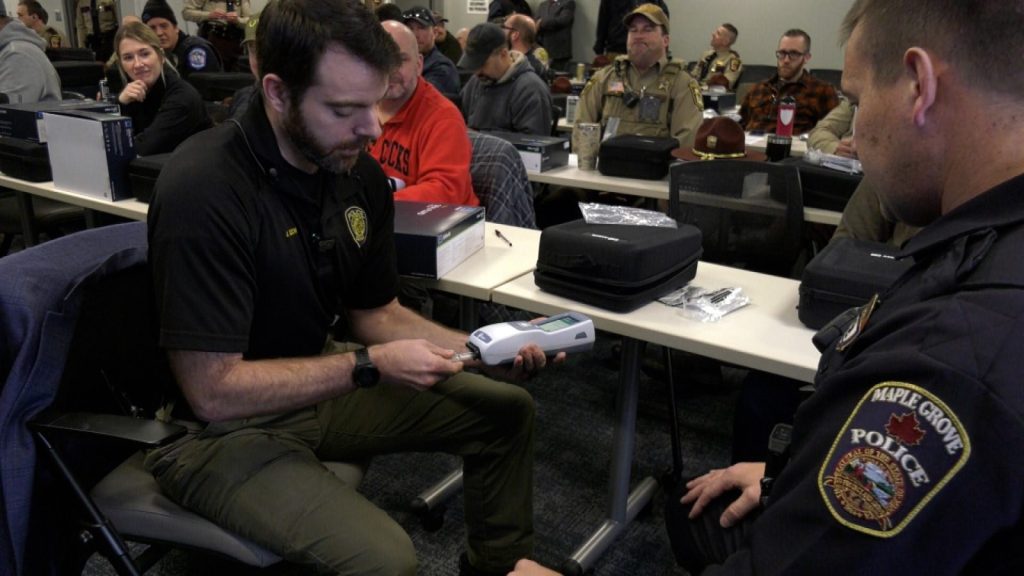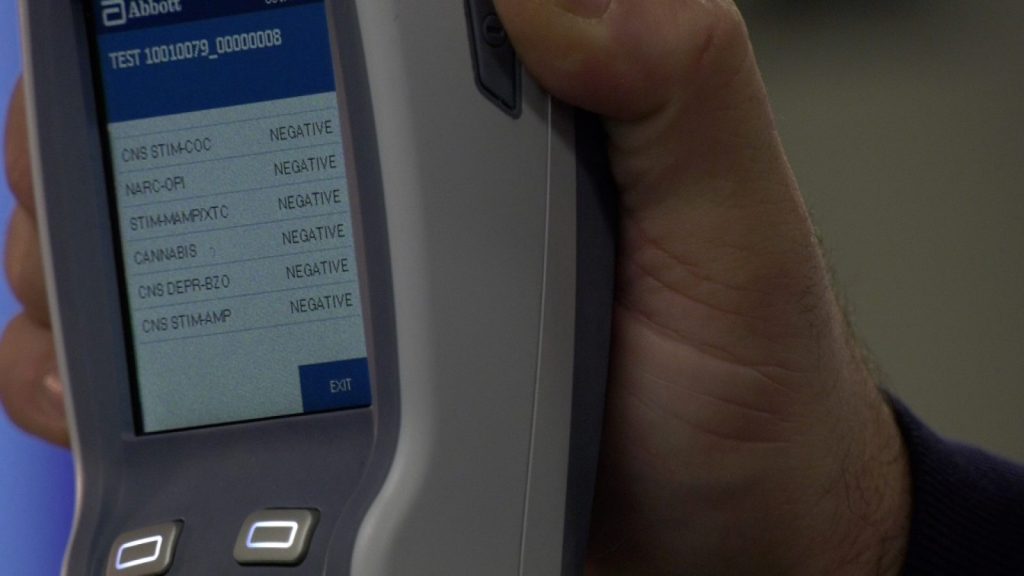Police Unveil New Tool To Detect Cannabis-Impaired Driving
Some law enforcement officers in Minnesota are testing out a new tool to help detect a number of drugs that could appear in a driver’s system, including newly-legalized marijuana.
Over the past five-year period, drug-impaired driver numbers are up 96 percent compared to the five years before. That’s 8,069 incidents between 2013-2017 compared to 15,810 incidents from 2018-2022.
“Drug-impaired driving is not something that is new on Minnesota roads, but we need to come up with new ways to combat it,” said Mike Hanson, director at the Minnesota Department of Public Safety’s Office of Traffic Safety.
A number of law enforcement members across the state are drug recognition officers or DROs, including Maple Grove Officer Jesse Mathwig. They are specially trained to recognize physical symptoms and behaviors caused by drugs.
Mathwig said people are still confused that marijuana use before driving could get them a DUI.
“Using cannabis inside of a vehicle, it’s no different than having an open alcoholic beverage inside a car,” Mathwig said. “It’s not allowed.”

Edina police officer Jaren Zech practices administering a test on Maple Grove officer Jesse Mathwig.
Testing Soon Underway
Nearly 100 officers sat in for training in Maple Grove this week to add the drug detection tool to their toolbox.
The SoToxa mobile test system is designed to quickly screen and detect the presence of drugs in oral fluid. A swab takes about 30 seconds and the machine takes five minutes to alert whether or not someone has recently used drugs.
The system, produced by Abbott, screens for THC in cannabis, cocaine, methamphetamine, opiates, amphetamine and benzodiazepines. It works similarly to roadside breath tests for alcohol and can be done during a traffic stop.
Officers completed training on Friday. Later in the year, officers will be trained in the Dräger Drug Test 5000, a similar system that also tests for a number of drugs in a person’s system.
Mathwig said he thinks the system will be an asset for officers and an even bigger asset for those not trained as DROs.
“Maybe (it will) help them make more DUI arrests to make the road safer,” Mathwig said.
Working Toward Results
Right now, this pilot program is serving as a study. That means drivers have to opt in voluntarily, but the results won’t play a role in any arrests or charges.
“This is not admissible in any court proceedings. It’s not admissible for any time of driver’s license sanction, and it cannot be used by the officer to help determine probable cause for the arrest,” Hanson said.
Officials plan to present the results used by officers in the pilot program to the legislature in 2025 for approval.
Hanson said he hopes drivers agree to take part in the pilot project to make roads safer for all.
“Traffic safety is something of critical importance to every Minnesotan, or everybody that uses our roads,” Hanson said.
Brooklyn Center | Brooklyn Park | Crystal | Golden Valley | Maple Grove | New Hope | Osseo | Plymouth | Robbinsdale | Twin Cities



